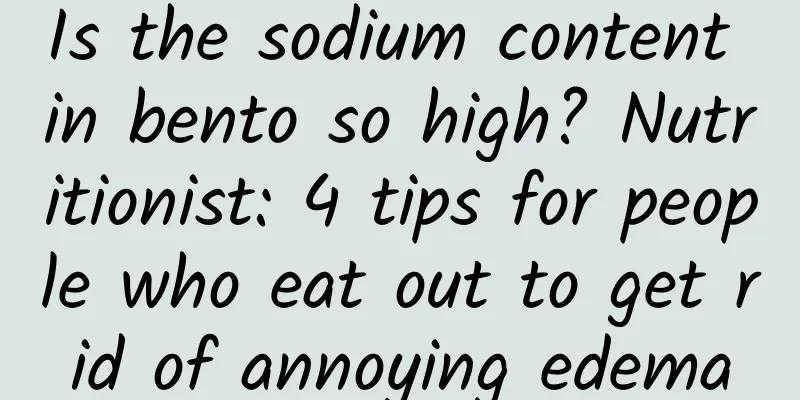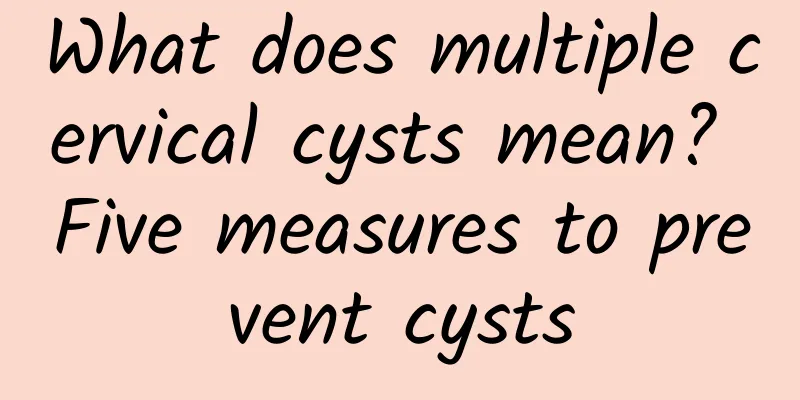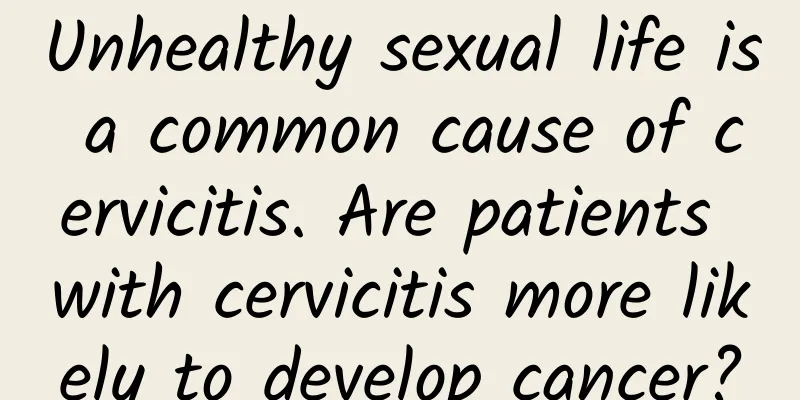Is the sodium content in bento so high? Nutritionist: 4 tips for people who eat out to get rid of annoying edema

|
A few days ago, the Consumers' Foundation randomly sampled 20 microwave bento boxes from the four major domestic convenience store chains and found that 15 of them had sodium contents far exceeding 800 mg. There was even one "roasted chicken drumstick rice" with a sodium content of 3080 mg, far exceeding the National Health and Family Planning Administration's recommendation that daily sodium intake should be controlled below 2400 mg. This result has caused heated discussion among the public. What are the health risks of excessive sodium intake? How should we eat to avoid excessive sodium intake and get rid of edema and possible kidney damage? Let’s hear what professional nutritionists say! Don’t worry if you eat a little too much salt. The “sodium-potassium pump” will function normally to help metabolism. Nutritionist Zhao Hanying said that in fact, if the human body does not have the three highs, chronic kidney disease, and has normal metabolic functions and a balanced diet, even if the sodium salt intake exceeds the standard, the excess sodium ions in the blood can be metabolized out through sweating, excretion, etc. through the body's "sodium-potassium pump" system. However, if you do not drink enough water and eat too few fruits and vegetables, the sodium-potassium pump will not be able to work properly due to insufficient potassium ion intake and too high blood concentration. This in turn causes a large amount of sodium ions to flood the blood, increasing the burden on the cardiovascular and kidney systems and affecting protein and carbohydrate metabolism. It also causes a large amount of water to be retained in the body, causing annoying problems such as edema and metabolic obesity, making people become swollen all over the body, which seriously affects human health. Attention foreigners! If you don’t restrict your diet during the three meals, beware of obesity and edema. Nutritionist Zhao Hanying shared that she had recently admitted a 32-year-old office lady in her outpatient clinic. She was 165 cm tall and weighed 75 kg. She came to see a doctor because she was suffering from edema and could not lose weight no matter how much exercise she did. To understand the cause of her obesity, I asked her about her usual eating habits. Unexpectedly, the office lady replied, "I usually eat very simply. I have teppanyaki noodles with milk tea for breakfast, and I order pork rib bento with my colleagues for lunch. For dinner, I have braised beef noodles with kelp and dried tofu. It's not very luxurious!" According to the Food Nutrition Facts Database of the Food and Drug Administration, every 100 grams of fried pork chop powder contains 2,927 mg of sodium. If we assume that each piece of pork chop needs 3 tablespoons (45 grams) of flour to coat it, without adding any additional seasoning, there will be at least 1,300 mg of sodium, which is quite a lot! I believe that the above dietary content must be familiar to many office workers! But if you study these meals carefully, you will find that a lot of salt is added to noodles such as teppanyaki noodles and beef noodles during the production process. With the addition of sauces and braised soup, the sodium content is greatly increased. As for the fried pork ribs in the pork ribs rice, in order to maintain their crispiness they are often coated with fried pork rib powder before cooking. However, according to the Food Nutrition Facts Database of the Food and Drug Administration, the sodium content of every 100 grams of fried pork rib powder is 2927 mg. If we assume that each piece of pork chop needs 3 tablespoons (45 grams) of flour to coat it, without adding any additional seasoning, there will be at least 1,300 mg of sodium, which is quite a lot! In addition to the problem of excessive sodium ion intake, this office lady's intake of fruits, vegetables and water is clearly insufficient! Over time, this will naturally lead to the inability to effectively metabolize the sodium ions in the blood, causing a large amount of them to remain in the body, causing annoying edema and poor metabolism problems. Fortunately, after detailed nutritional consultation, learning how to read nutritional labels, adjusting eating habits, reducing sodium intake, and doing moderate exercise for 2 months, the OL not only successfully lost 5 kilograms and got rid of the edema problem, but her body shape also changed from size XL to size M, a full 2 sizes smaller. Not only did her appearance become slimmer, but her mental and physical strength also improved a lot. Drink 35-40cc of boiled water equal to your body weight every day, and avoid sugary drinks. It can naturally help dilute excess sodium ions in the blood and reduce the metabolic burden on the kidneys. Want to avoid high sodium levels that can damage your kidneys and cause edema? Nutritionist: Remember these 4 tips to improve your daily diet How should we adjust our daily diet to avoid excessive sodium intake? Nutritionist Zhao Hanying emphasized that, in fact, as long as the following four dietary principles are implemented specifically, and regular exercise is combined to help sweat and promote metabolism, it can naturally help reduce sodium intake by more than half, restore physiological functions to normal, and allow the "sodium-potassium pump" to fully play its regulatory role again: Tip 1: Drink plenty of water: Drink 35-40cc of boiled water times your body weight every day, and avoid sugary drinks. It can naturally help dilute excess sodium ions in the blood and reduce the metabolic burden on the kidneys. Tip 2/Choose raw foods: Choose raw foods as much as possible, and eat less fried, breaded, thickened and other complicated cooking methods. For example, ham, bacon, etc., which can also help reduce sodium intake. Tip 3/Drink less soup and sauce: When ordering noodle soup, choose clear soup and drink less soup, and avoid dry noodles with sauces that contain a lot of sodium salt. Tip 4/ Follow the "Fruits and Vegetables 579" principle: Remember that children should consume 5 servings of fruits and vegetables, adult women 7 servings, and men 9 servings (each serving is about the size of a fist) every day. Eat a balanced amount of fresh fruits and vegetables to replenish the potassium ions needed to maintain the functioning of the sodium-potassium pump. |
<<: Krill oil contains astaxanthin, can it help with weight loss? Experts have something to say!
>>: Can hugging help you lose weight and fight aging? 8 benefits of holding your own
Recommend
How do new mothers treat cervical erosion? Does postpartum cervical erosion need treatment?
Welcoming the arrival of a new life after childbi...
Why do infertile women suffer from uterine fibroids? How to treat uterine fibroids
What should women do when they find uterine fibro...
Office workers slim belly 2-step chair exercise
The part of the body where fat is most likely to ...
What are the symptoms of mild threatened miscarriage?
Threatened abortion is extremely harmful, so if a...
What are the causes of vaginal itching in women?
According to clinical statistics, many women will...
What to eat for dysmenorrhea?
What can you eat to relieve dysmenorrhea? After d...
Gastric ulcer discomfort ~ 3 tips to protect your stomach, 3 must-eat cabbage foods
Gastric ulcer is an invisible killer of gastroint...
Introducing methods to prevent irregular menstruation in life
Irregular menstruation is a common gynecological ...
What are the chances of curing pelvic peritonitis?
Can pelvic peritonitis be cured? Gynecological ex...
How to avoid pelvic inflammatory disease?
As we all know, pelvic inflammatory disease is a ...
Introducing the three major treatment methods for ectopic pregnancy
Ectopic pregnancy has had a great impact on our l...
What are the symptoms of cervical hypertrophy in life
Many women suffer from cervical hypertrophy, but ...
Can uterine effusion be treated with medicine?
Accountants, office clerks, editors, computer ope...
Can I wash clothes with hot water after an abortion?
We all know that abortion is harmful to women'...
Things You Don't Know About Grapefruit and Internal Environmental Protection
Time flies, and the Mid-Autumn Festival is here a...









